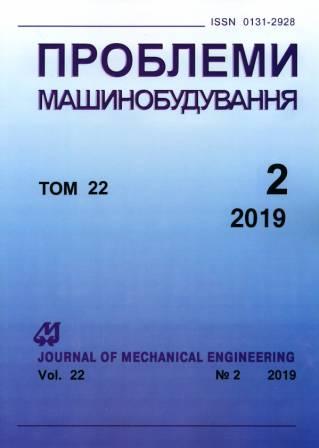Перспективы применения микропримесей водорода для улучшения экологических показателей дизельного двигателя
Ключевые слова:
бортовой электролизер, водород, микропримеси, дизельный двигатель, экологические показателиАннотация
Проблема ухудшения экологической ситуации в мегаполисах, в том числе и из-за токсичности отработавших газов транспортных двигателей, требует комплексного решения. Особенностью процессов смесеобразования и сгорания в дизельных двигателях является наличие локальных зон, богатых топливом или воздухом. Это приводит к неполному сгоранию дизельного топлива и способствует формированию токсичных и канцерогенно-мутагенных соединений. Отработавшие газы дизельных двигателей содержат твердые частицы, которые благодаря своей развитой поверхности являются носителями канцерогенно-мутагенных соединений. Очень важным фактором, влияющим на полноту сгорания топлива в цилиндре двигателей внутреннего сгорания (ДВС), является интенсивный теплообмен между стенками камеры сгорания и рабочим телом. В результате этого возникает относительно холодный пристеночный слой газа. В этом слое остаются несгоревшие углеводороды CnHm и формируются твердые частицы. Добавление микропримесей водорода к свежему заряду позволяет значительно уменьшить толщину "холодного" слоя за счет интенсификации процесса сгорания в цилиндре ДВС и пристенных участках. Генерирование и использование на борту автомобиля водорода в качестве микропримеси к штатному топливу двигателя обосновано следующим. Во-первых, увеличивается активация процессов сгорания в цилиндре двигателя и, соответственно, полнота сгорания топлива, что способствует снижению уровня массовых выбросов твердых частиц и несгоревших углеводородов с отработавшими газами ДВС. Во-вторых, такой подход позволяет снизить уровень нагрузки на штатные системы нейтрализации отработавших газов двигателей современных транспортных средств, повысить надежность их работы и увеличить ресурс. Разработана конструкция бортового малогабаритного электролизера и алгоритм его управления. Проведены комплексные моторные исследования влияния микропримесей водорода к дизельному топливу на эффективные показатели дизеля 1Ч 8,5/11 и токсичность его отработавших газов. По данным результатов экспериментальных исследований установлено, что при добавлении микропримесей водорода, за счет повышения реакционной способности и полноты сгорания топлива, обеспечивается снижение уровня выбросов оксида углерода на 5–6% и на 20% дымности отработавших газов при практически полном отсутствии несгоревших углеводородов. Использование предлагаемой конструкции и алгоритма работы бортового электролизера позволит существенно снизить уровень токсичности отработавших газов транспортных ДВС при минимальных энергозатратах на функционирование системы.Библиографические ссылки
Podgornyy, A. N. (1978). Vodorod – toplivo budushchego [Hydrogen, the fuel of the future]. Kiyev: Naukova dumka, 133 p. (in Russian).
Podgornyy, A. N., Varshavskiy, I. L., & Priymak, A. I. Vodorod i energetika [Hydrogen and energy]. Kiyev: Naukova dumka, 144 p. (in Russian).
Solovey, V., Zipunnikov, M., Shevchenko, A., Vorobjova, I., & Kotenko, A. (2018). Energy effective membrane-less technology for high pressure hydrogen electro-chemical generation. French-Ukrainian J. Chemistry, vol. 6, no. 1, pp. 151–156. https://doi.org/10.17721/fujcV6I1P151-156
Solovey, V., Nguyen Tien Khiem, Zipunnikov, M., Shevchenko, A. (2018). Improvement of the membrane – less electrolysis technology for hydrogen and oxygen generation. French-Ukrainian J. Chemistry, vol. 6, no. 2, pp. 73–79. https://doi.org/10.17721/fujcV6I2P73-79
URL: https://www.ronnmotorgroup.com/
Fomin, V. M. & Platunov, A. S. (2011). Vodorod kak khimicheskiy reagent dlya sovershenstvovaniya pokazateley raboty avtomobilnogo dvigatelya s NVB [Hydrogen as a chemical reagent for improving the performance of an automobile engine with GDI]. Transport na alternativnom toplive – Alternative Fuel Transport, no. 4 (22), pp. 30–39 (in Russian).
Pevnev, N. G. & Ponamarchuk, V. V. (2015). Analiz svoystv vodoroda s tselyu vozmozhnosti yego primeneniya v kachestve dobavki k osnovnomu toplivu [Analysis of the properties of hydrogen with the aim of its possible use as an addition to the main fuel]. In Progressive technologies in transport systems. Paper presented at the Proceedings of the XII International Scientific and Practical Conference. Orenburgb:OrenburgStateUniversity, pp. 304–309 (in Russian).
Peretrukhin, S. F., Brizitskiy, O. F., Kirillov, V. A., Kuzin, N. A., & Kozlov, S. I. (2010). Bortovoy generator sintez-gaza dlya DVS s iskrovym zazhiganiyem [An onboard synthesis gas generator for spark ignition internal combustion engines]. Transport na alternativnom toplive – Alternative Fuel Transport, no. 5 (17), pp. 68–74 (in Russian).
Matskerle, Yu., Ivanova, V. B., & Benediktova, A. R. (1987). Sovremennyy ekonomichnyy avtomobil [The modern economical car].Moscow: Mashinostroyeniye, 320 p. (in Russian).
Smolenskaya, N. M., Smolenskiy, V. V., & Shaykin, A. P. (2009). Vliyaniye dobavki vodoroda na protsess goreniya v benzinovykh dvigatelyakh s iskrovym zazhiganiyem [Influence of the addition of hydrogen on the combustion process in gasoline engines with spark ignition]. In Progress of vehicles and systems. Paper presented at the Proceedings of the IV International Scientific Conference.Volgograd:VolgogradStateTechnicalUniversity, pp. 247–248 (in Russian).
Gilchrist, S. & Rand, T. (2019). Hydrogen fuel injection to improve engine efficiency the practical beginning of the hydrogen economy. Canada: Canadian Hydrogen Energy Company, 15 p. URL: http://nha.confex.com/nha/2007/recordingredirect.cgi/id/196 (Accessed: 30.05.2019).
Vodorod, kak prisadka k standartnomu toplivu DVS. Prosto dobav vody [Hydrogen, as an additive to standard engine fuel. Just add water]. Avtomobil'noye i gazovoye oborudovaniye – Automotive and gas equipment: official website, URL: http://carscomfort.ru/dvs/vodorod-v-dvs.html (Accessed: 30.05.2019) (in Russian).
Kudryash, A. P., Marakhovskiy, V. P., & Kaydalov, A. A. (1989). Teoreticheskiye i eksperimentalnyye issledovaniya sgoraniya vodoroda v dizele [Theoretical and Experimental Studies of the Combustion of Hydrogen in a Diesel Engine]. Voprosy atomnoy tekhniki i tekhnologii. Seriya yadernaya tekhnika i tekhnologii – Problems of Atomic Science and Technology. Series: Nuclear technology and technology, iss. 2, pp. 48–50 (in Russian).
Marakhovskiy, V. P. & Kaydalov A. A. (1992). Vodorodnyy dizel [Hydrogen diesel]. Avtomobilnaya promyshlennost – Automotive industry, no. 2, pp. 17–19 (in Russian).
Загрузки
Опубликован
Выпуск
Раздел
Лицензия
Copyright (c) 2019 Andrey N. Avramenko, Anton M. Lievtierov, Valerii M. Bhantsev, Nataliia Yu. Hladkova, Vira M. Kirieieva

Это произведение доступно по лицензии Creative Commons «Attribution-NoDerivatives» («Атрибуция — Без производных произведений») 4.0 Всемирная.
Авторы, публикующиеся в этом журнале, соглашаются со следующими условиями:
- Авторы оставляют за собой право на авторство своей работы и передают журналу право первой публикации этой работы на условиях лицензионного договора (соглашения).
- Авторы имеют право заключать самостоятельно дополнительные договора (соглашения) о неэксклюзивном распространении работы в том виде, в котором она была опубликована этим журналом (например, размещать работу в электронном хранилище учреждения или публиковать в составе монографии), при условии сохранения ссылки на первую публикацию работы в этом журнале.
- Политика журнала позволяет размещение авторами в сети Интернет (например, в хранилищах учреждения или на персональных веб-сайтах) рукописи работы, как до подачи этой рукописи в редакцию, так и во время ее редакционной обработки, поскольку это способствует возникновению продуктивной научной дискуссии и позитивно отражается на оперативности и динамике цитирования опубликованной работы (см. The Effect of Open Access).

